Here it comes again, that time of the biggest disappointment of the year, Valentine’s day.
For the girls: Am I going to get the gift I want? Did he get the hint I’ve been dropping since Christmas? Will my bouquet be bigger than the last one he sent to his ex? Is he going to book the dinner for us or do I have to do it again? Did he book the Valentine’s dinner way in advance, or right before he invited me? (I’ve heard some women even sneak and check the reservation call on the boyfriend’s phone to gauge how much he cares…holy Christ!)
For the guys: Is the gift going to be good enough? Or, more likely, oh shit, I forgot it’s next Saturday! Now, how am I going to get in the restaurant she likes? Why are flowers are so expensive around this time? I hope she likes my homemade bouquet–I made it with my heart (and it’s cheaper than paying $10/rose at the florist). (Or, if it’s early on in the dating,) Is she going to say “yes” to have Valentine’s dinner with me? (Almost as nerve-wracking as asking someone to marry you.) Why the heck do they have to hype up the darn Valentine’s, along with the birthday, anniversary, anniversary of the day we met, etc…aren’t those GOOD ENOUGH?
Right?
I shall continue to offer my Hating Valentine’s Day post as I’ve done since I started this blog. I don’t actually hate Valentine’s Day, even though I am not excited about it either. I’ve seen more than enough drama around this time of the year. The only thing I hate about Valentine’s is how the restaurants handle their overwhelming guests, with set menus and crowded tables that you can hear the conversation from not only the table next to you, but the other one next to them!
So, my solution for Valentine’s is to stay at home and cook my own food. I have already posted a few recipes in the past for a simple home-cooked meal that can wow your significant other.
Starting with.. a heart-shaped macaron. (This one isn’t easy, but it’s worth it.)
Chicken milanese with orange in syrup.
Pineapple fried rice with pineapple panna cotta.
Thai Southern chicken curry with yellow sticky rice and black sticky rice with pandan custard.
This year, it will be the simple king prawns or lobster baked with glass noodles in a clay pot and hot bananas in coconut milk.
Let start with the savory dish. You will find this recipe and the method so simple but so delicious you will want to make and eat it again.
Goong Ob WoonSen, กุ้งอบวุ้นเส้น is the official Thai name for this dish, even though it’s definitely an adopted dish from the Chinese (again). It’s actually a pot of noodles and prawns seasoned with soy sauce and oyster sauce, then baked in a clay pot over the stove top. It is a dish with intricate layers of flavors.
Goong=prawn or shrimp, regardless of what size;
Ob=bake;
WoonSen= glass noodles, cellophane noodles, bean thread or silver noodles; it’s the name for all these noodles. They’re’ made with mung bean flour (You can read more about the noodles here in “Thai Noodles for the Beginner, Episode I: All About Noodles)
Let’s talk about the clay pot for a moment here. This dish does not necessarily have to be cooked in a clay pot. The street vendors in Thailand don’t use a clay pot anymore either. They use aluminum pots shaped just like a traditional clay pot.
My guess is they used the clay pot in the old time because they cooked it over a charcoal stove, so they needed something that could transmit the heat evenly, which makes a thick clay pot a good choice. If this dish were to be cooked here in the US, I bet the chef would pick a cast iron pot or dutch oven as their choice, for sure.
So, do not adhere to the pan as much as the method. I’ve used many different kinds of pots to cook this dish, ranging from Pyrex, aluminum, non-stick, and cast iron dutch oven, to Le Creuset, a wok, and of course the real clay pot I’m using this time. It’s not that much different in result.
The clay pot actually isn’t my favorite choice because I’ve had a pot break over the stove before. Can you imagine the mess it made and the amount of cleaning I had to do? Let alone that I had no dinner on top of it, too. Nothing worse than cleaning something that could have been my delicious dinner off the stove and I can’t eat it because it contains the debris of the pot, cleaning products and such. And that makes me nervous while I’m using the clay pot even now. So just grab the pot you have at home and you will be fine.
You’ll notice the ingredients are fewer than usual here.
Ingredients:
1) Large prawns, 2-4 depend on the size, (I used 4 of the 1/2 size prawn) or a lobster. To see the details about the size of the shrimp or prawn please, visit my Tom Yum Goong post here.
2) Bacon, about 4-5 slices, just enough to cover the bottom of whatever pot you use.
3) Garlic, about 2-8 cloves, depending on how much you like it. but you should balance the fact that garlic is an aphrodisiac, hence it could spark the romance (ironic, isn’t it?) with the unavoidable garlic breath that could put out the romantic fire! I only used 4 large cloves. You can slice them or crush the whole clove, up to you.
4) Ginger, peeled and sliced across thinly, about 10-16 pieces.
5) Black pepper, 1-2 tablespoons, cracked or crushed. I used 2 tablespoons because I like it, but you don’t have to use that much if you don’t like it peppery. You can also use ground black pepper too; 1/2 to 1 tablespoon should be good.
6) (Optional) Sichuan pepper, 1 teaspoon (Important for me, but might not be for you who’s never tasted this dish. So I would say this one is optional, but you should try it at least once.)
7) Cilantro root, or the whole bunch of the cilantro stems, if you can’t find the root. If you are using the cilantro stems, tie them together so you can pick them out of the pot together easily.
8) Oyster sauce 1/4 cup; this is the one most important ingredient in the condiment department. If you don’t have it, or don’t like it, I wouldn’t recommend making this dish.
9) Dark sweet soy sauce 1/4 cup, or dark soy sauce with molasses.
10) Soy sauce or seasoning sauce 1/4 cup
11) Soup stock 3/4 cup
12) Sesame oil 2 tablespoons (I always use black sesame oil for Asian cooking, not cold-pressed white sesame oil)
13) Dried glass noodles, silver noodles, or bean thread 4 oz.
14) Green onion, Chinese celery, cilantro; which ever you prefer. I used green onion and cilantro.
Method:
1) Soak the noodles in cold water.
2) Clean the prawns, cut all the sharp spikes off and cut the shell in the middle throughout length of the back part of the prawn, but keep the shell together on the prawn. This will keep the prawn from overcooking, which is very critical. With the slit in the middle of the shell we can then peel them easily later once they’re cooked.
3) Mix all the sauces together with the soup stock and sesame oil in a bowl.
4) Layer the bacon as the first layer at the bottom of the pot.
5) put the ginger slices, garlic and cilantro root on top of the bacon.
I intentionally made these ingredients in large chunks, so you can pick them out if you don’t want to eat them, or pick and eat them if you like. You can mush or grind them, too. In that case, remember that the flavors will be much stronger.
6) Add the cracked Sichuan pepper and crushed black pepper on top of that layer.
7) Take the noodles out of water. The noodles should be soft now. Drain the water well and layer the noodles on top of everything else.
8) Now only the prawns and the sauce are left. Dip the prawns in the sauce and make sure that the sauce soaks inside of the shell that you already slit open.
9) Pour the rest of the sauce over the noodles and try your best to work the sauce into the noodles without disturbing the stacking of all the layers.
10) The last layer is the prawns. Put them on top of the noodles.
11) Close the lid and set the pot over the stove. This can sit until about 20-30 minutes before serving time. You can start making dessert, drinks, set the table or even take a shower, trim your nose hair and shave your legs. The prawns won’t crawl out of the pot–the lid is already on, remember!
When it’s 15-20 minutes before you plan to serve, then turn on the stove at medium heat under the pot.
The reason that the timing is a range rather than precise is because the thickness of the pot has the biggest effect on the cooking time. The thicker the pot, the more cooking time needed to heat the pot, but the heat will last quite a bit after you turn off the stove, so your noodles will keep warm longer too. So pick a thick pot if you can.
12) Open the pot after cooking for 15 minutes. You should see the prawns have turned pink and the noodles look clear. Even though coated with the sauce, the noodles should look softer and clearer than before. If they’re not–both prawns and noodles–cover the pot and continue cooking for another 5 minutes. I cooked mine for 20 minutes, but I used a thick pot. If you are using thiner pot, it might be already cooked at 15 minutes.
If you are using smaller prawns, use less noodles because the prawns might get overcooked by the time the noodles are cooked.
13) Once the prawns are cooked, turn off the stove and add the green onion, tossing them among the noodles and all other ingredients, which will now also be all over the place after you toss them. Cover the pot again and wait a few more minutes before serving.
You probably won’t be surprised if I tell you that Thai people would eat this dish with “Nam Jim” or dipping sauce. Yes, we love dipping sauce and customizing the taste. In this case, the dipping sauce we used is the “Nam Jim Seafood“. I normally don’t use it though, but I’m not the typical Thai palate anyway. So please feel free to use it.
If you have a chance to visit Thailand, you should order this dish. The special thing about this is they will use prawns or shrimps, never frozen. So, you get to experience the sweet taste of fresh seafood. That’s make this dish so special to me, unlike a lot of the frozen seafood that I have to use here.
If you want vegetables to go with it, you can boil a pot of water with salt and some canola oil. Wait until it reachesa rolling boil, then put baby Bok Choy or any other vegetables you like in it. Boil for a few minutes until they’re all cooked. Take the vegetables out and arrest the cooking with cold water, then dip them back in the boiling water for just 15 seconds. This way you will get vegetables that are green, crispy and glossy-looking.
When you take the noodles out of the pot, I would recommend taking some bacon pieces from the bottom of the pot, too. It’s delicious. Or you can wait until the morning after and use the bacon to scramble with eggs for breakfast. You might need that boost of energy, right? 😉
Okay, the savory dish is ready. It shouldn’t take more than half an hour to prep all of this. Now we should start the dessert. I would like to introduce you to the very famous Thai dessert, Kluay Buad Chee.
Kluay = bananas;
Buad = the method of cooking a dessert in coconut milk and sugar. You will see pumpkin (or the American name for it, Kubocha squash), taro, sweet potato, breadfruit and banana cooked this way.
Chee = the Buddhist nun; she wears the wrapped outfit just like a monk but in white, shaves her head and all, but doesn’t wear any headdress.
If you get confused after reading the translation, it’s normal. Don’t panic just yet. This is a very unique Thai name that has been altered from the original name, just to be playful with words, Thai style.
Let’s start with the word “Kaeng Buad”. By the way, if you don’t really care about the history, just skip the next four paragraphs. Kaeng means soup or stew in Thai. It usually signifies a savory dish, but when you say “Kaeng Buad”, it is different. It means that the fruits or root vegetables described above, that normally also can accompany a savory stew or Kaeng, would be boiled in coconut milk with sugar, and that makes this “Kaeng” a dessert dish.
I’m not done yet. The word Buad บวด has another homophone, Buach บวช. They’re actually pronounced exactly the same because Thai do not pronounce the “ch” like in English, so the sound gets cut short to sound like the word Buad anyway.
Busch บวช means to be ordained as a novice monk or a nun.
Back to Kaeng Buad. When they make the Kaeng Buad Kluay, they typically use granulated sugar instead of palm sugar, together with the coconut milk, so the bananas tend to be covered in a white coating. Someone put together the word Buad with the Bhuddist nun outfit and calling Kaeng Buad Kluay, Kluay Buad Chee. Meaning the banana is ordained as a nun.
Complicated, but I hope not too much for you. Believe me, not a lot of Thai people understand this name either, but we all know what it is when you refer to the name. It’s always the same, delicious bananas in hot coconut milk syrup.
It’s so easy that this can be done at the same time as your Goong Ob WoonSen. Ingredients are only 4: bananas, coconut milk, sugar, salt, and nothing else.
The type of the banana is important. I used the kind called “Kluay Nam Wah”, or “Pisang Awak” in Indonesian language. It’s shorter than the Cavendish banana, the banana that is sold all over supermarkets here in the US. The taste of the “Nam Wah” banana is slightly more sour than the Cavendish, but the texture is denser and creamier, not falling apart as easily as the Cavendish.
This is the common type of banana grown and eaten all over Thailand. We do have the Cavendish kind, but we don’t normally cook them. NamWah cooks so much better than the Cavendish because it doesn’t fall apart as easily, and it doesn’t matter if you boil or deep-fry them. And we sometimes grill them too, even though we also have the plantain-like type for grilling.
You can use any type you can find, but if you want to use the Cavendish kind, do not boil them too long or with too high heat, and pick the one that is slightly green instead of yellow. Do not pick ones that already have brown spots. Under-ripe bananas would be better than the over-ripe ones, because the over-ripe ones will fall apart while cooking and are not going to come out as pretty.
Ingredients for the dessert:
Bananas 4 of the NamWah or 2 of the Cavendish
Coconut milk 1 cup + 2 tablespoons
Sugar 1/2 cup
Salt 1/2 teaspoon
Method for the dessert:
1) Peel the bananas. You can cut them in half. Most of the time you will see this dish served with bananas cut about 2” long and half lengthwise. I want to make the serving dish pretty so I don’t want to cut them to small pieces.
2) Boil the coconut milk (but reserve the extra 2 tablespoons), salt and sugar over medium heat, making sure you don’t let the syrup boil. Once it reach the boiling point, add the bananas and lower the heat to medium low,
wait until it starts to bubble again, turn the bananas and make sure that they’re all cooked, then turn off the heat. You can pour the extra tablespoons of coconut milk in at this time.
You can serve it hot or at room temperature. You can let it sit until you are ready for dessert and serve it slightly warm, too. Kluay Buad Chee is good at any temperature. I’ve seen people eat them cold out of the refrigerator. I won’t do that, but you can.
Have a very happy meal on your Valentine’s night 🙂

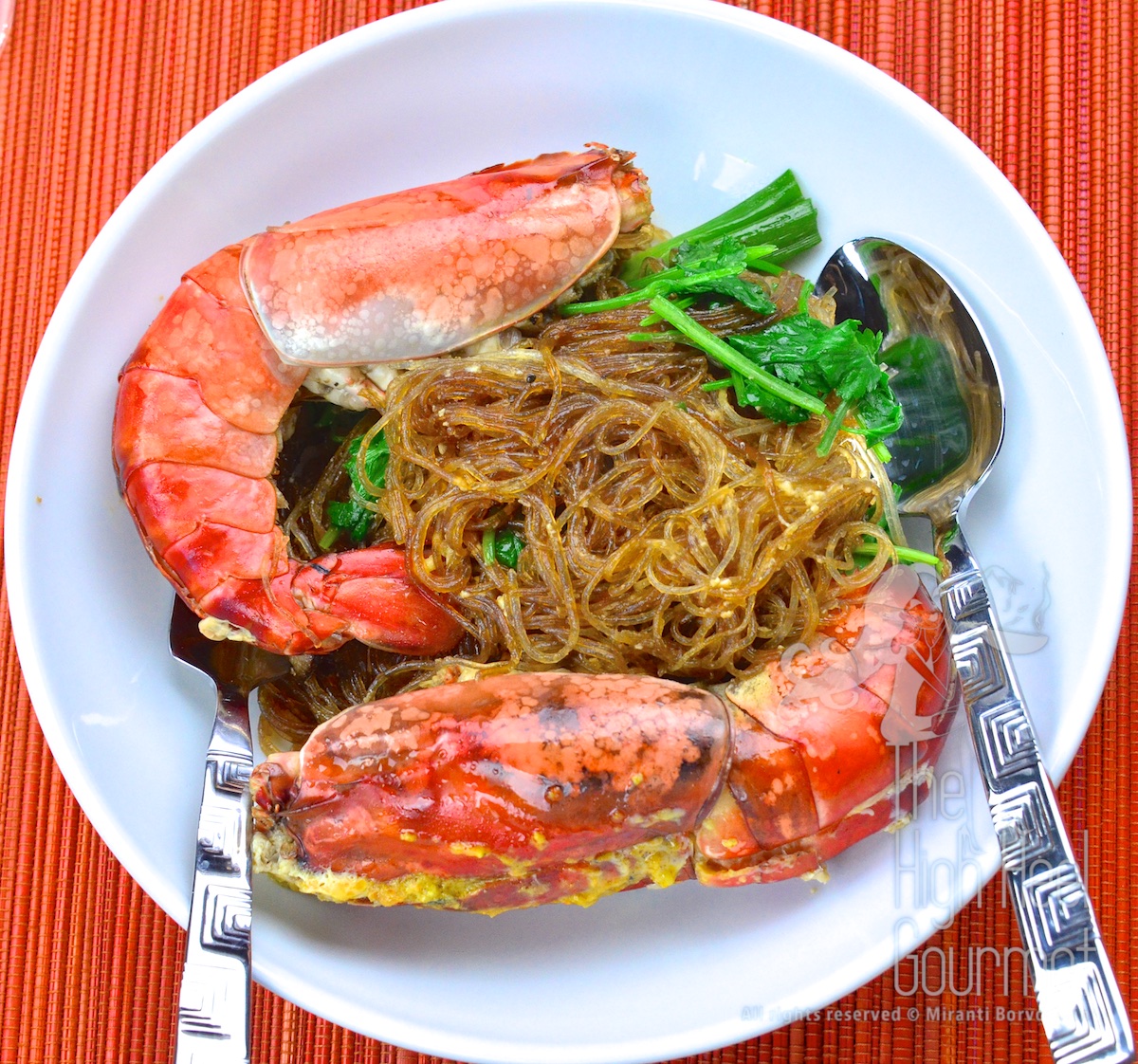
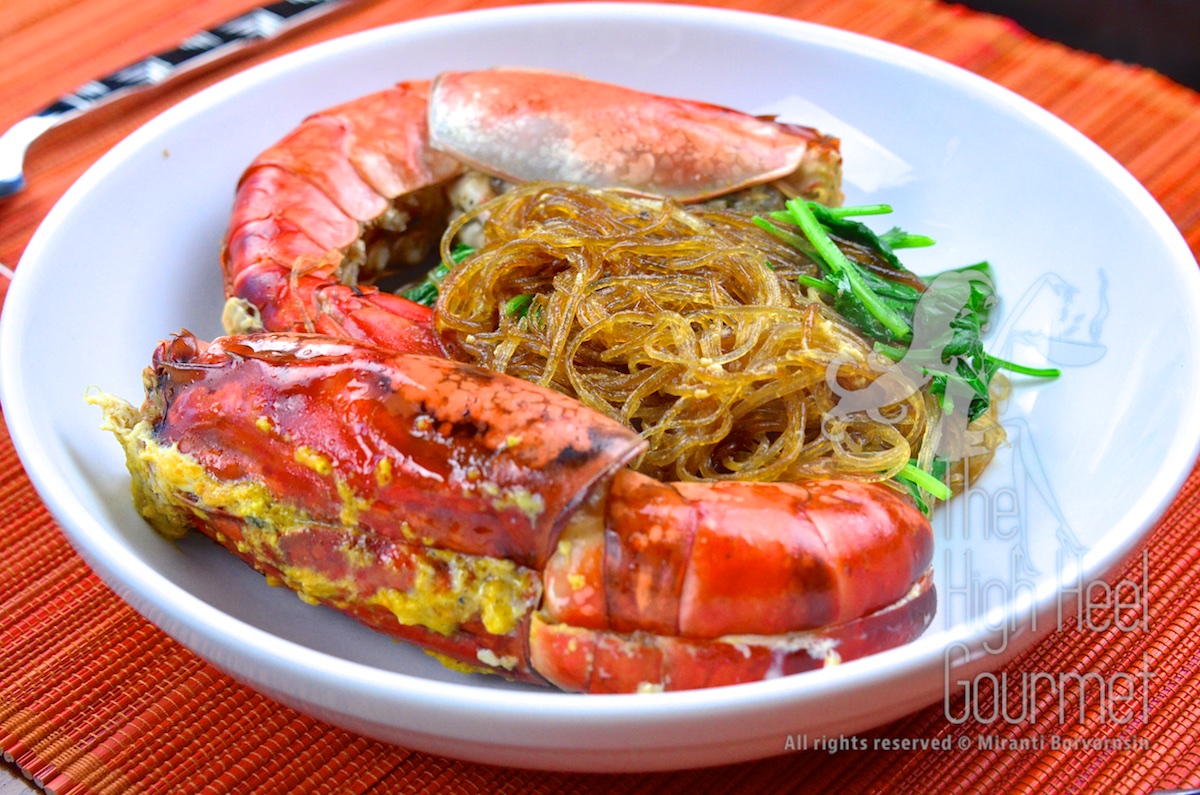
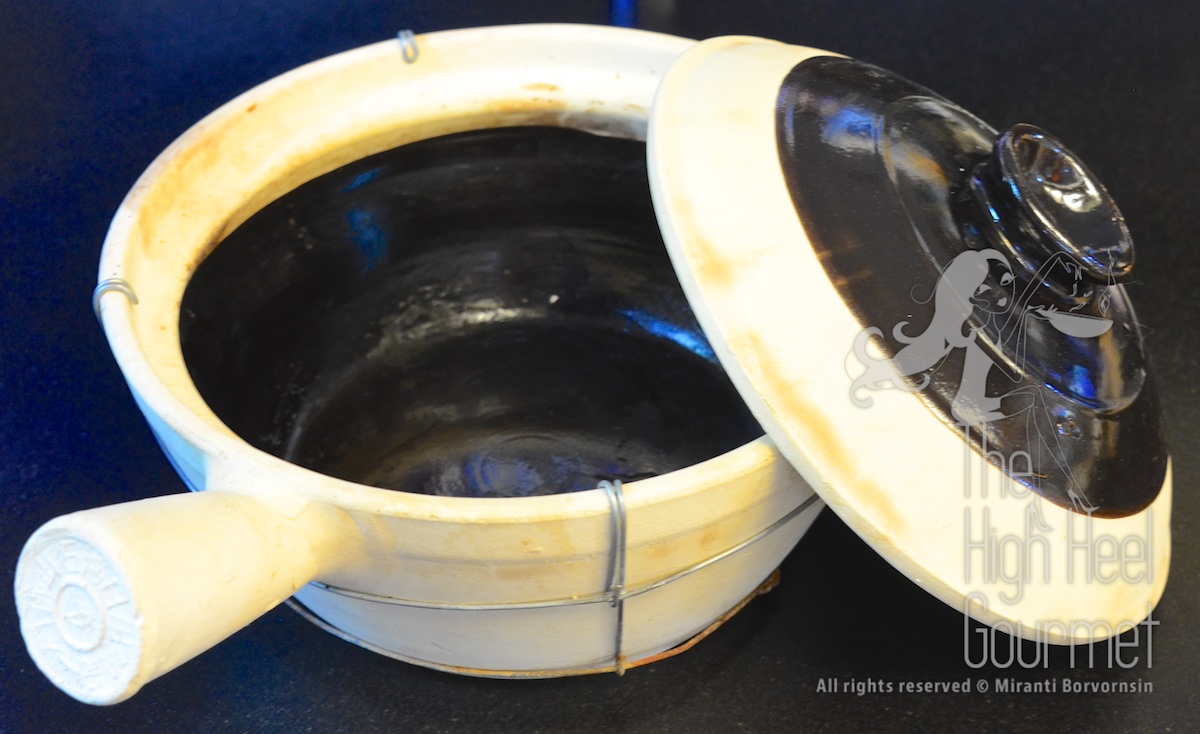
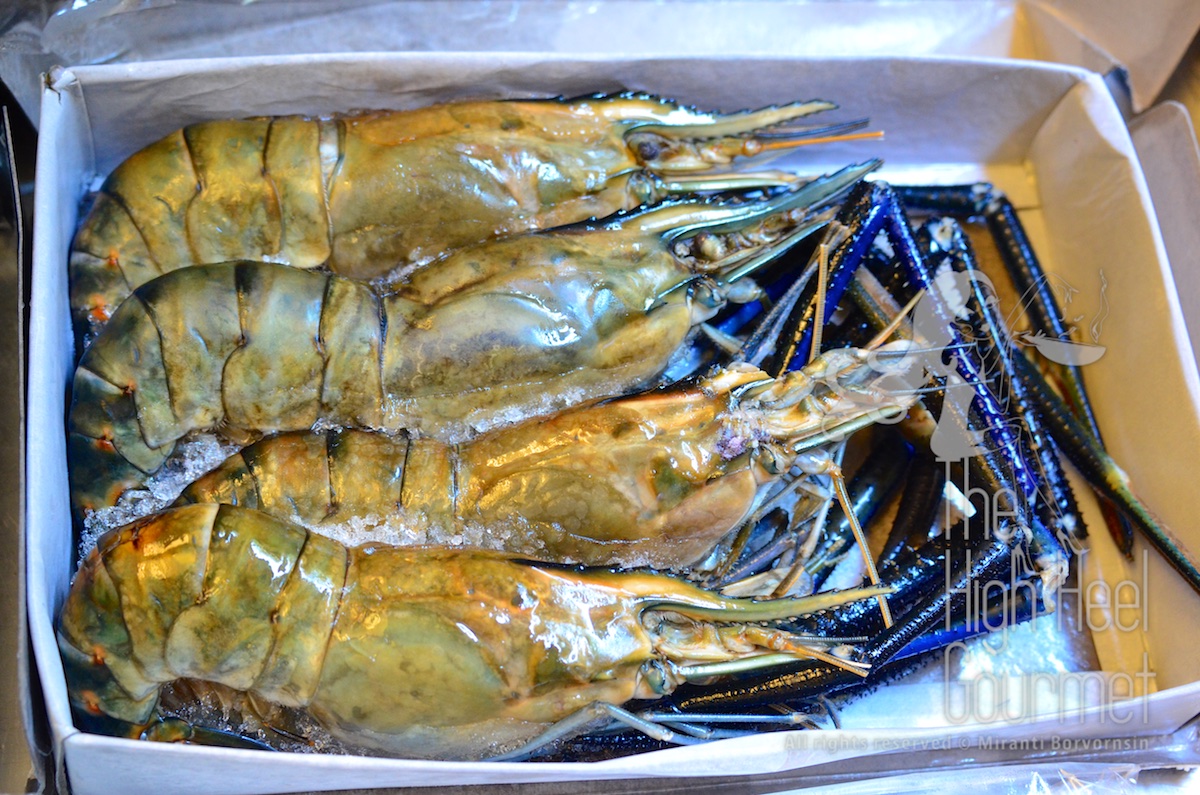
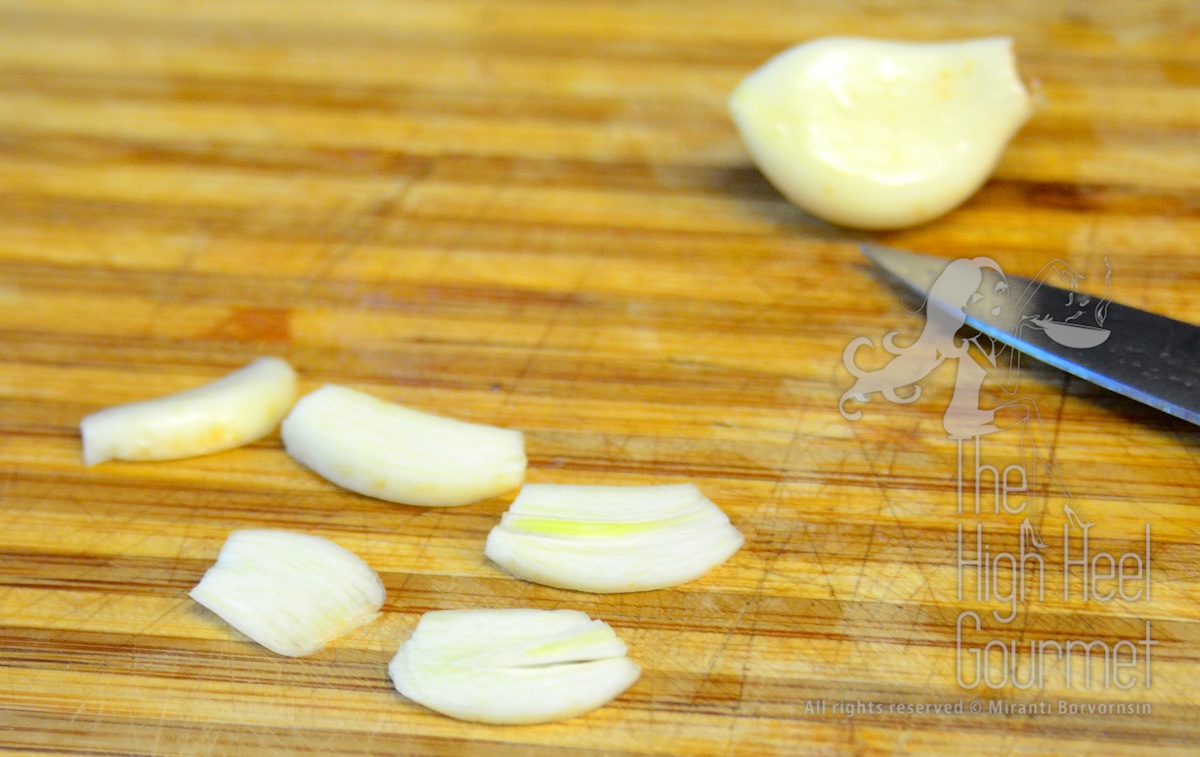
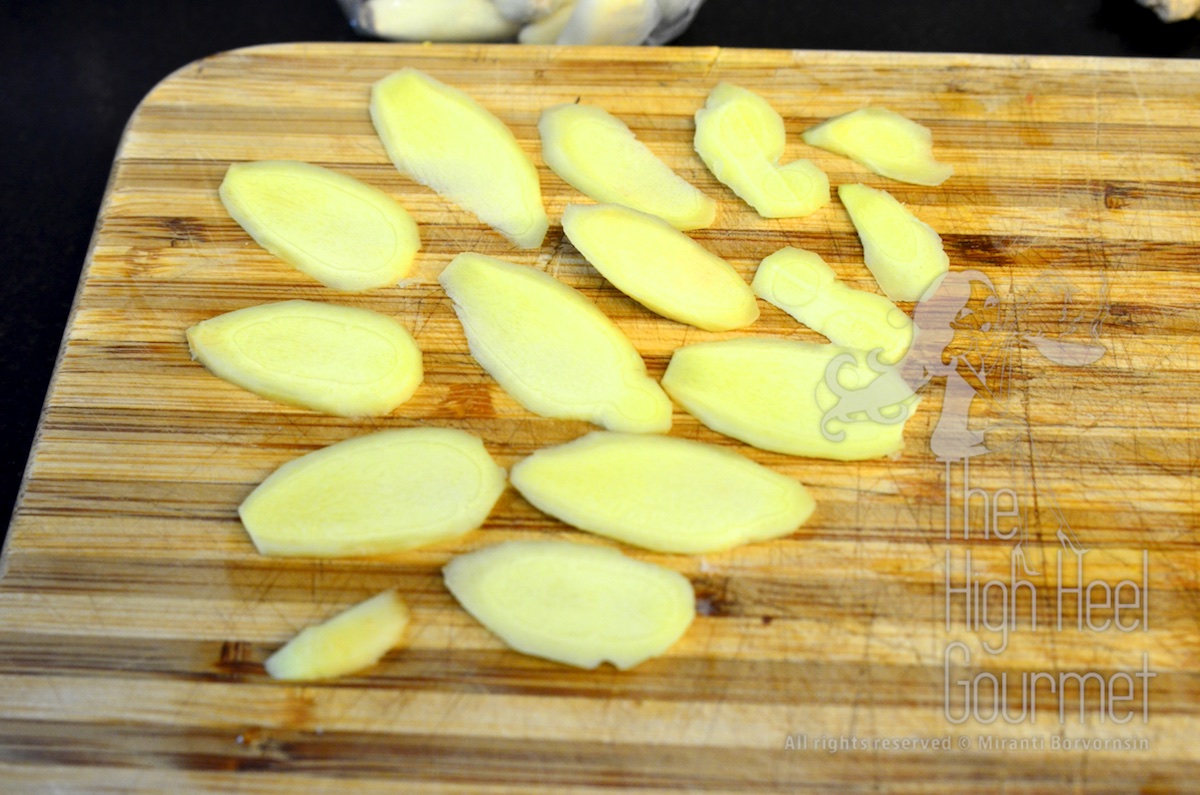
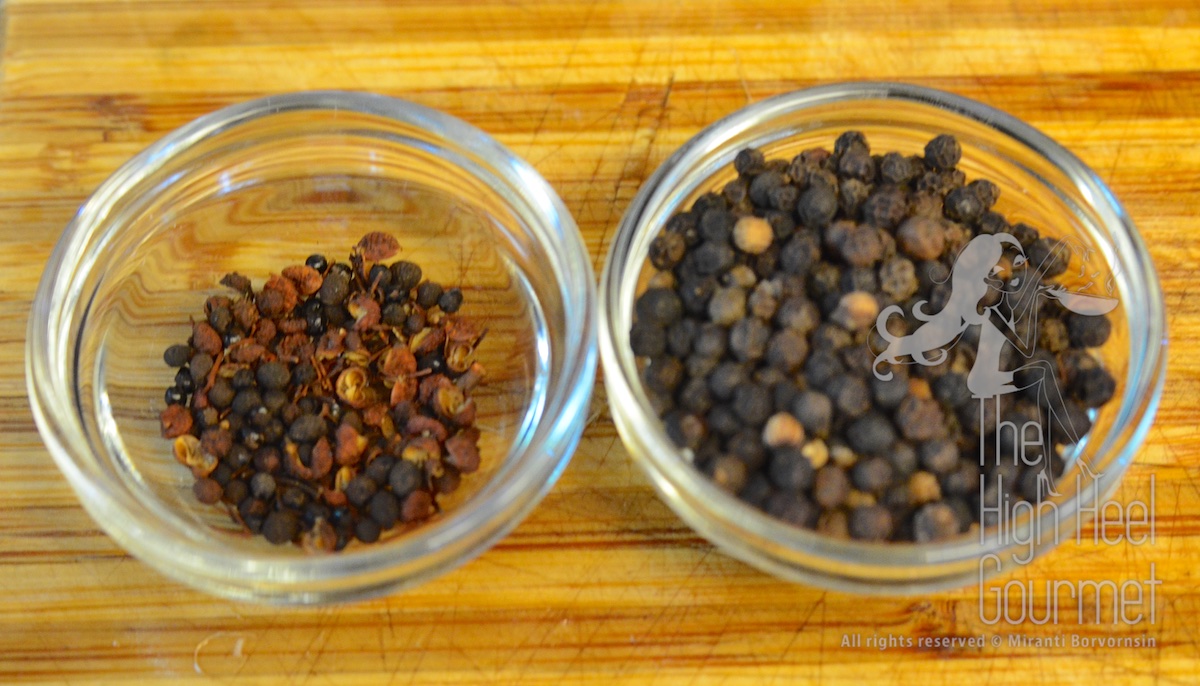
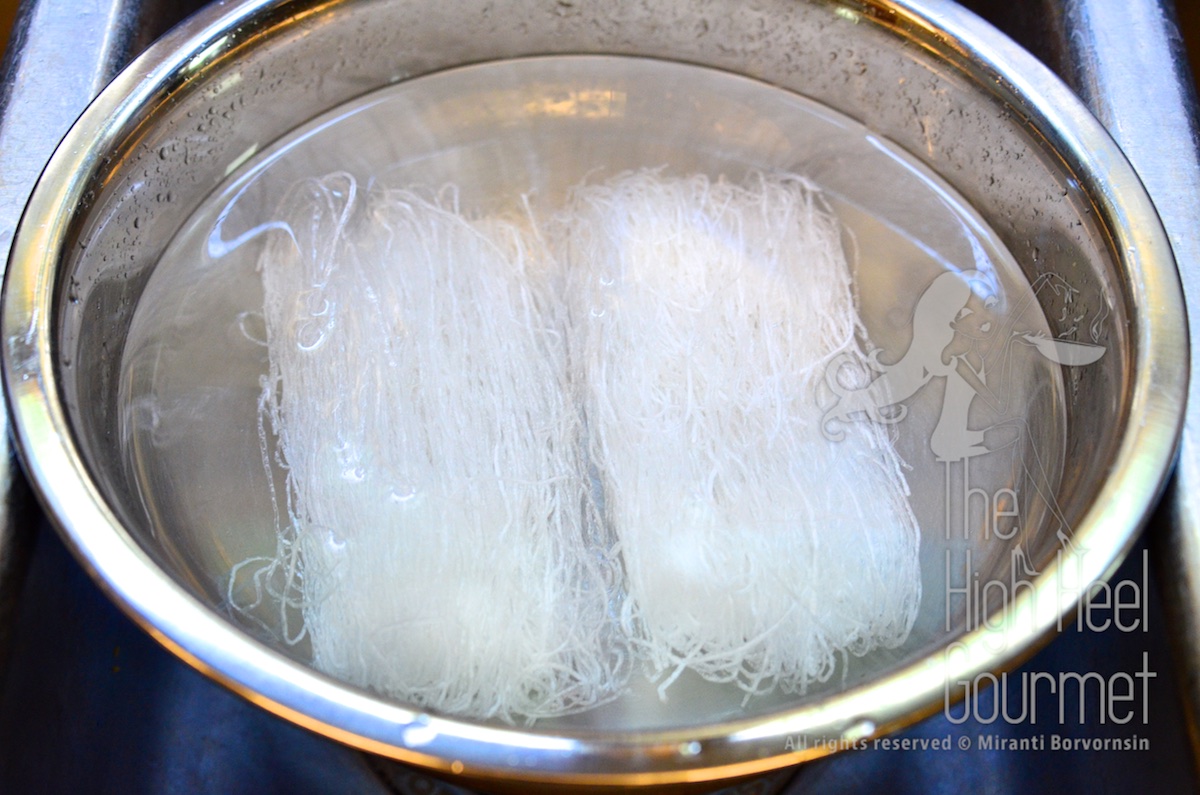
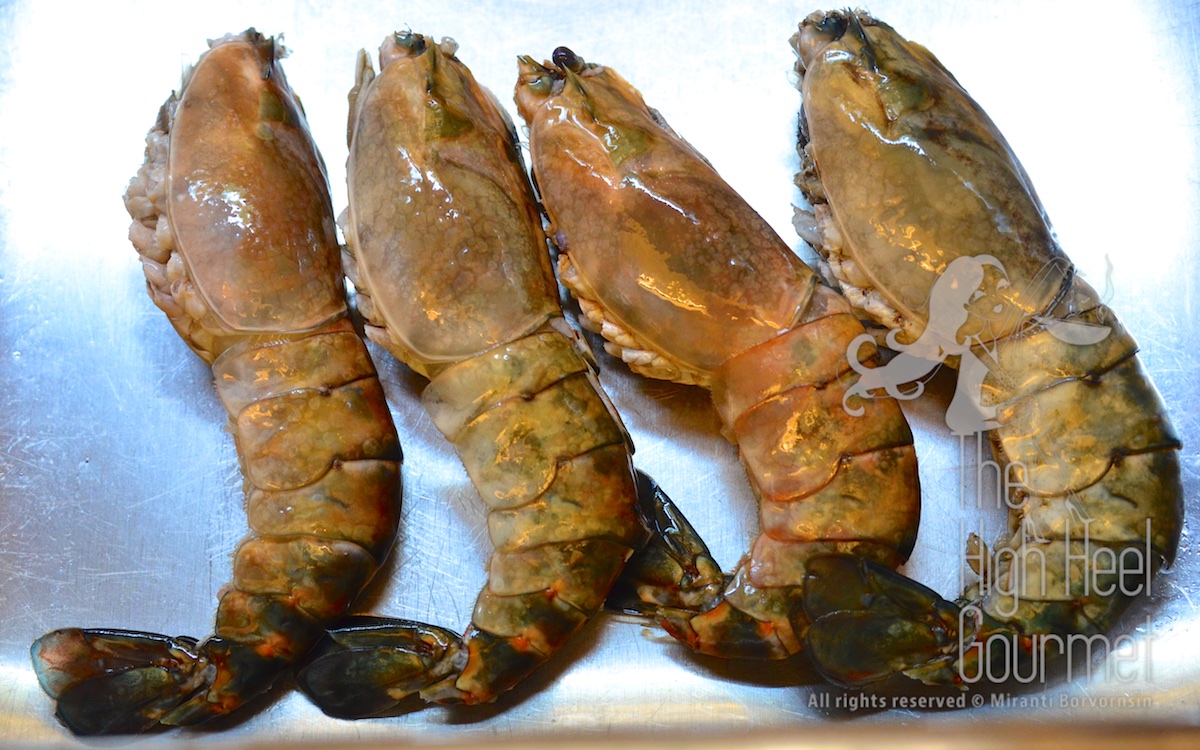
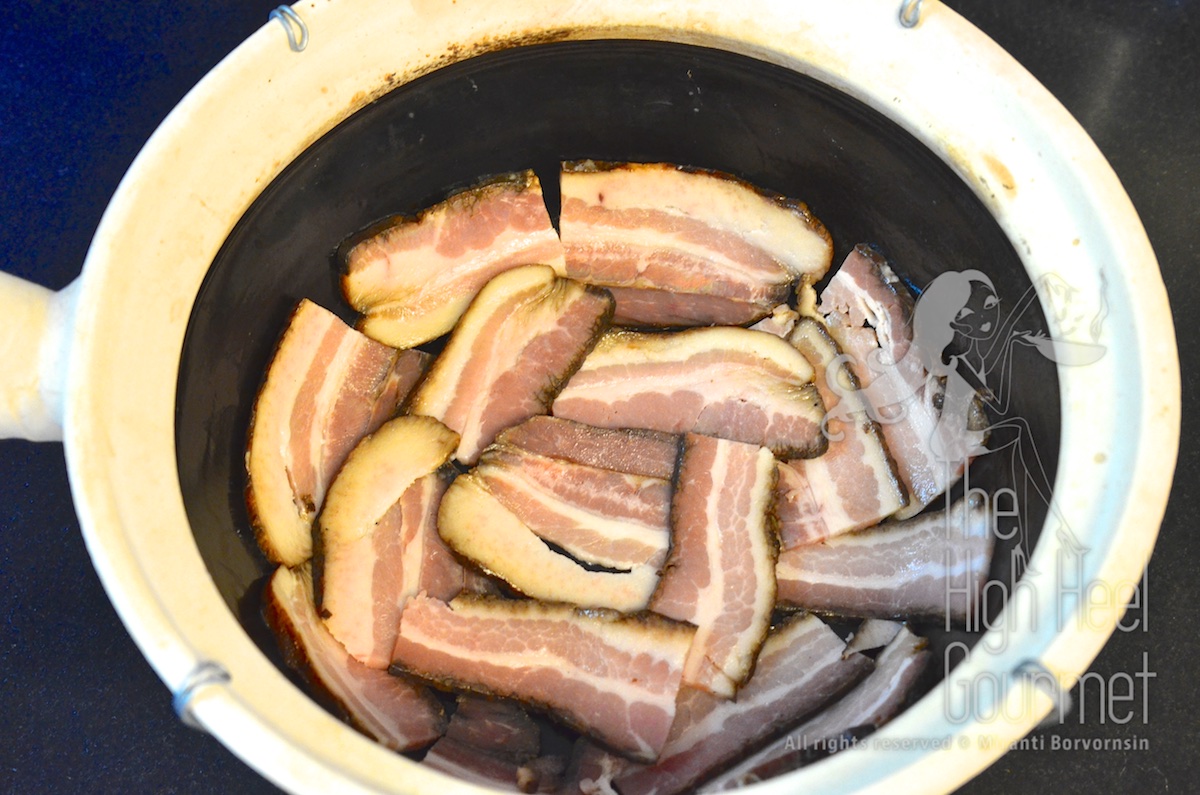
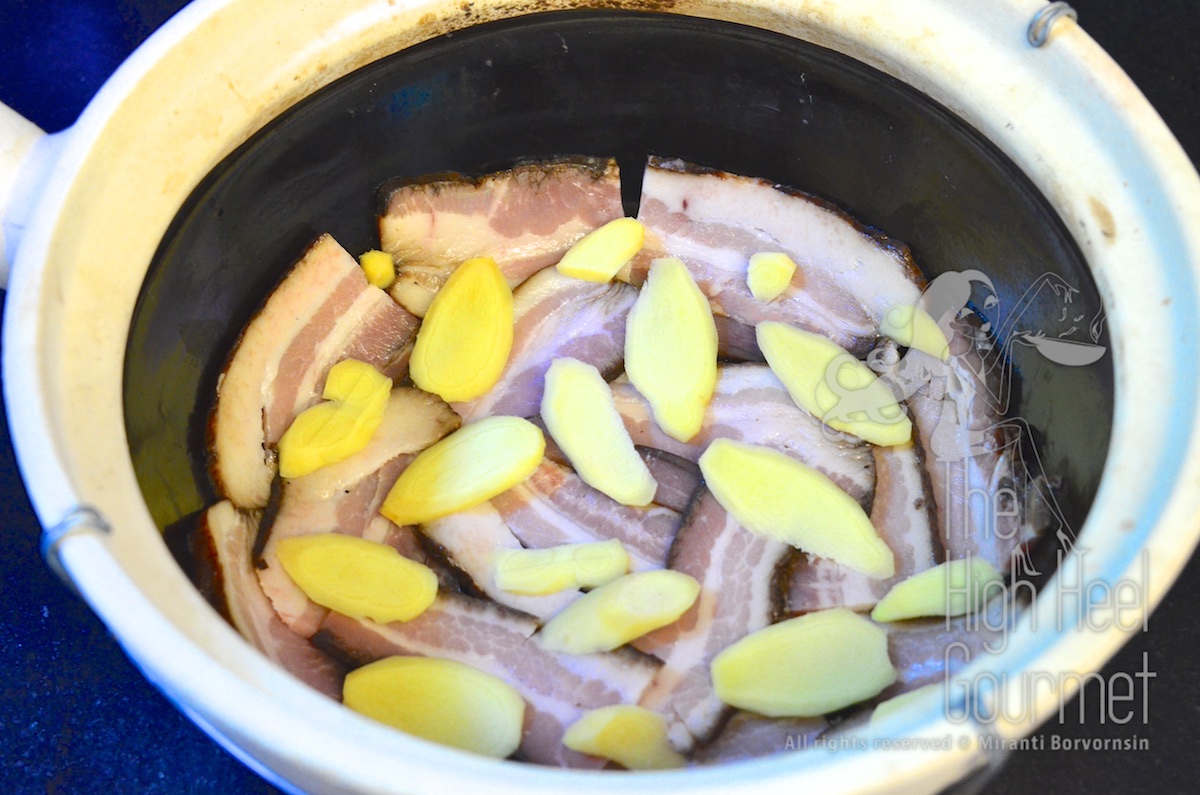
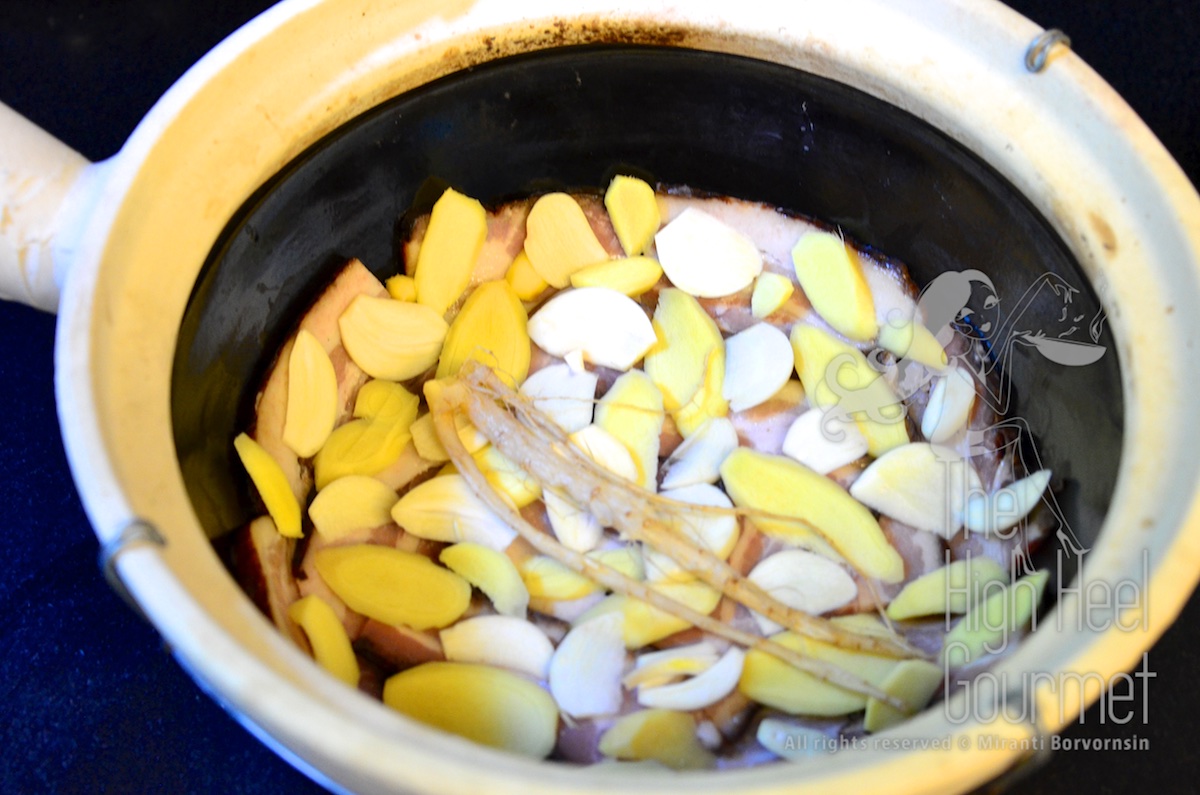
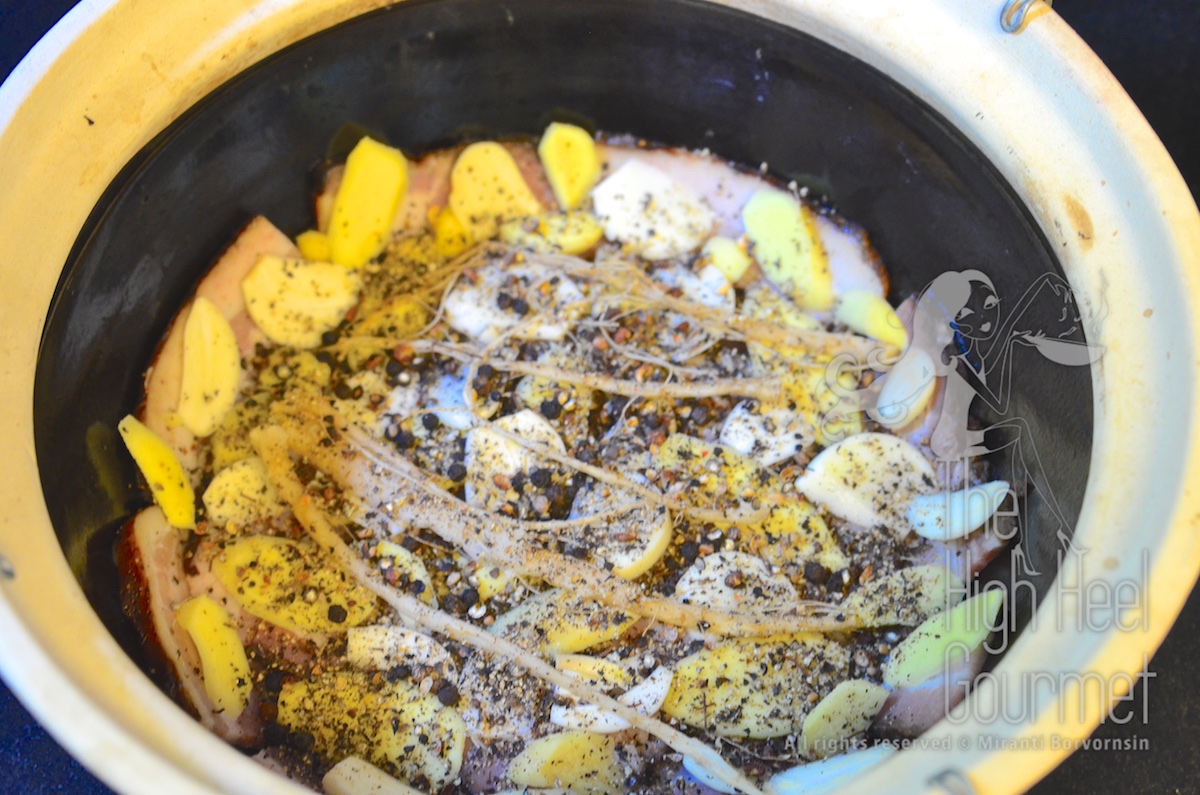
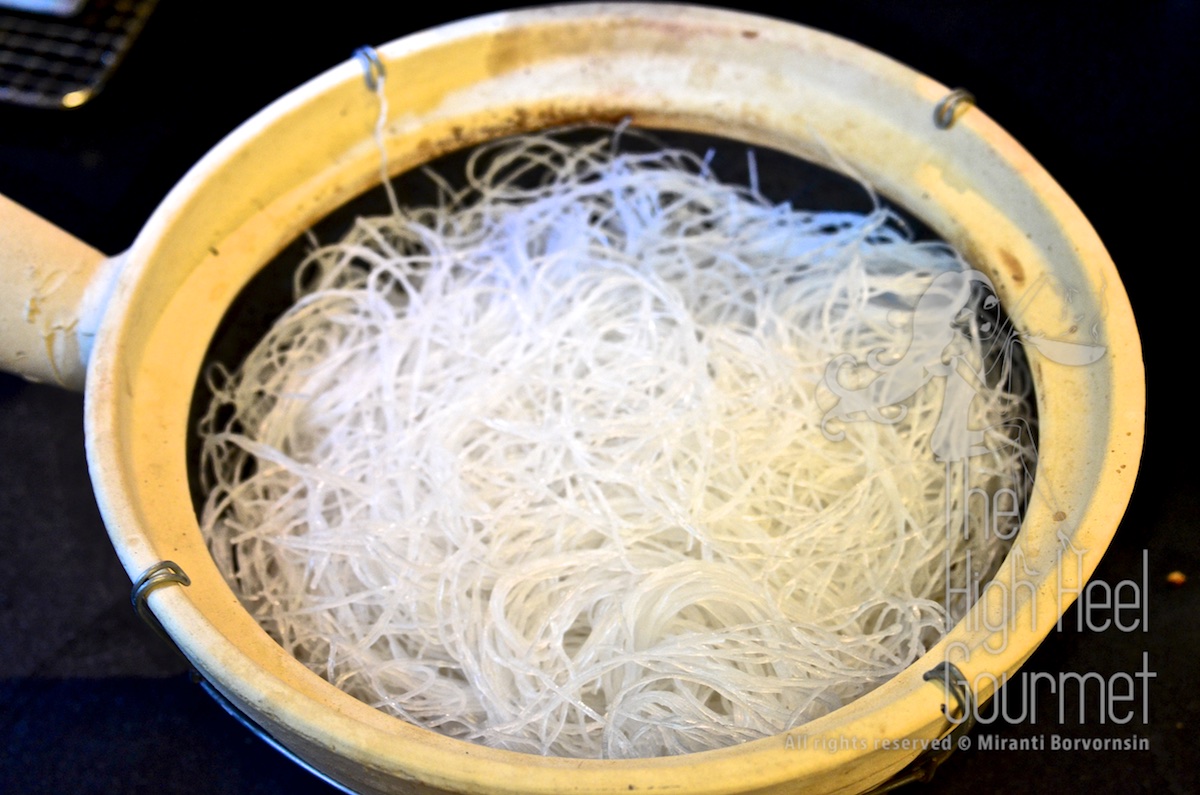
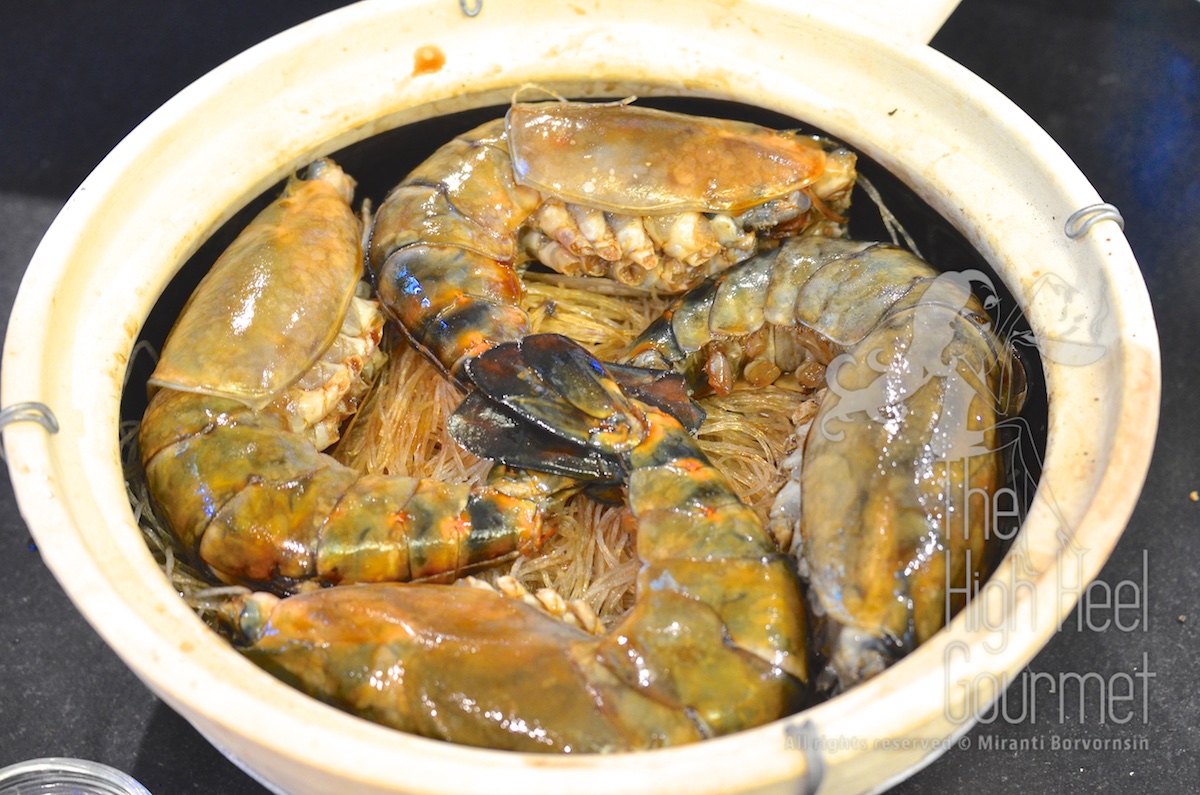
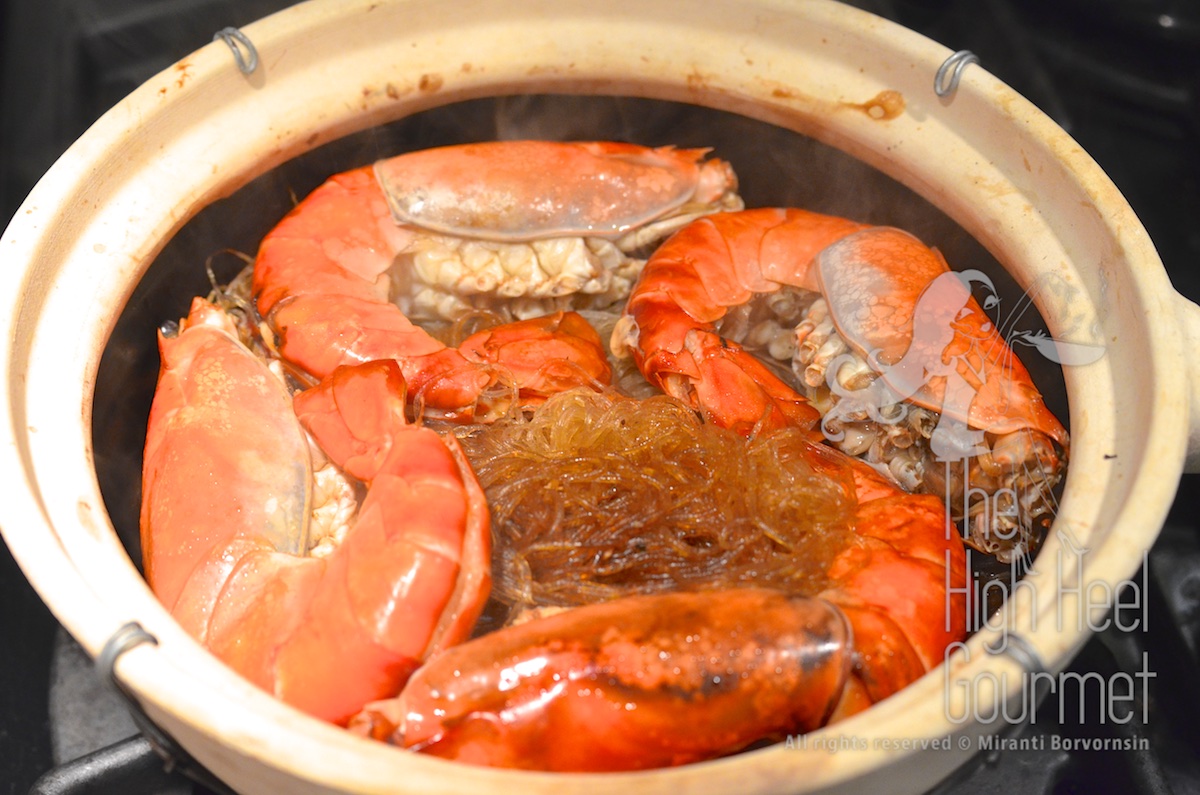
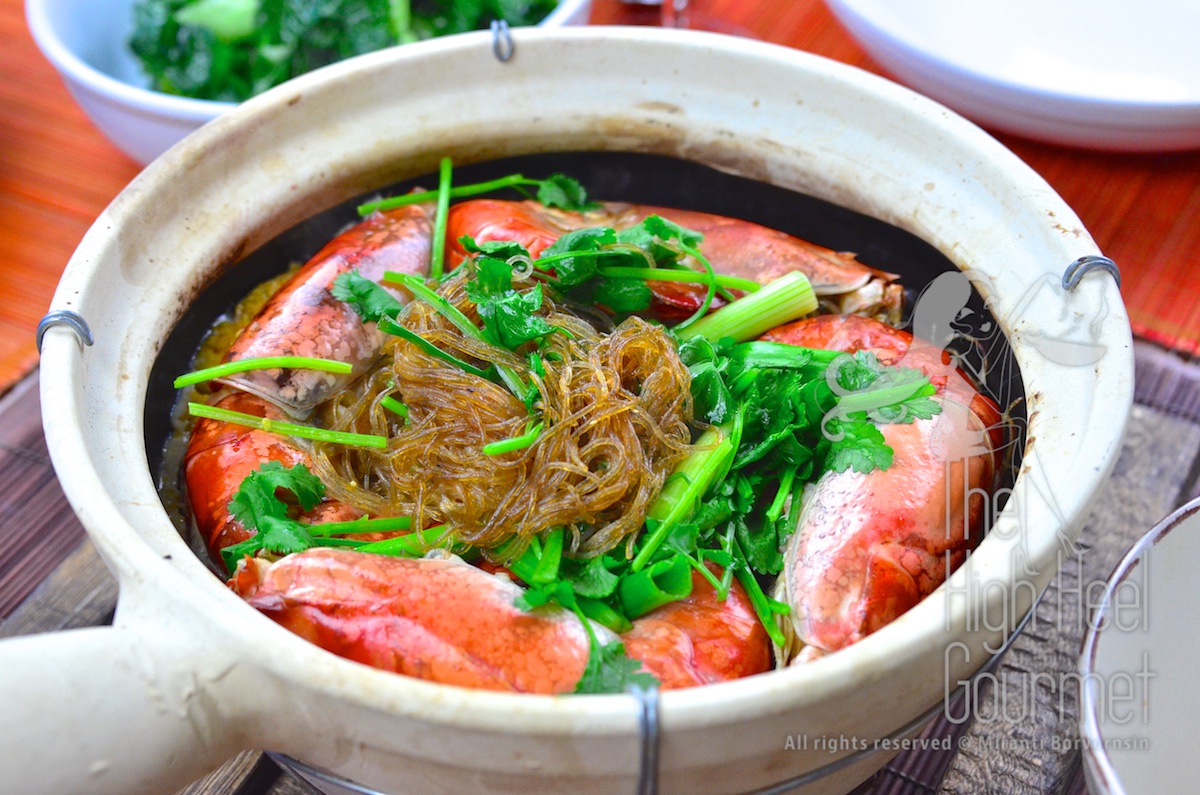
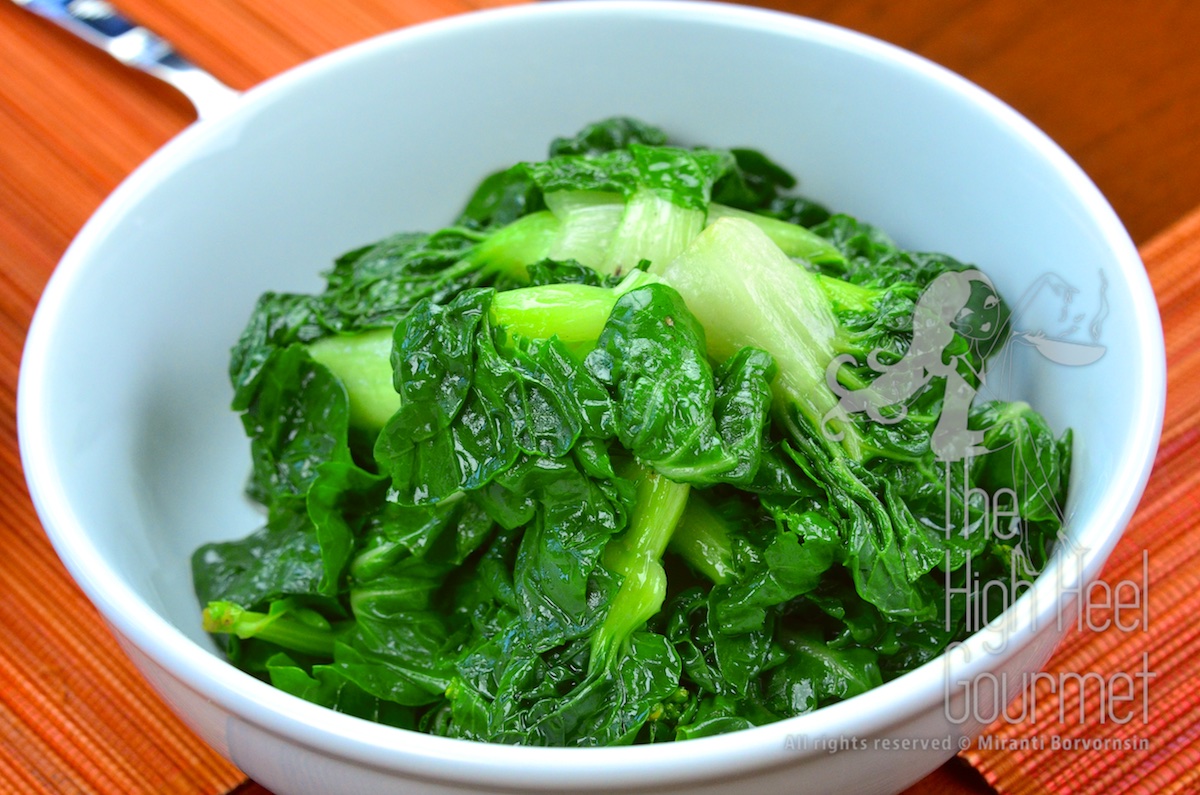
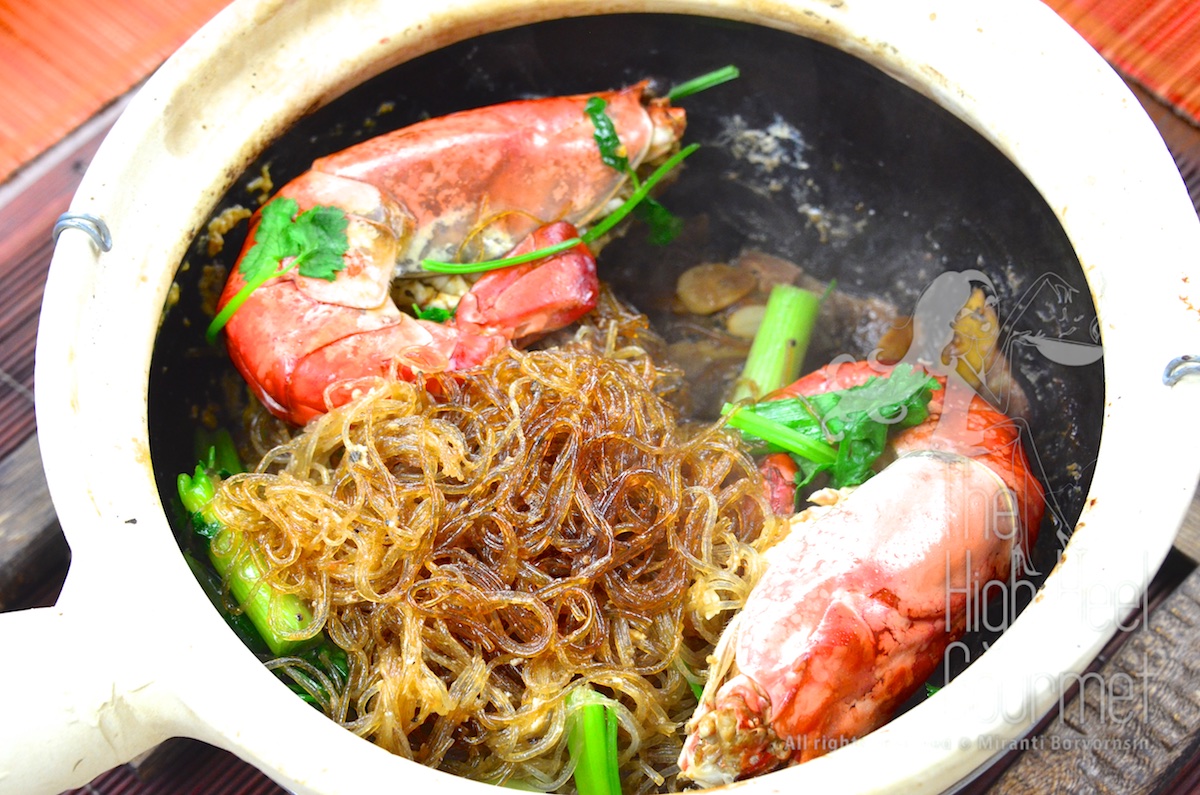
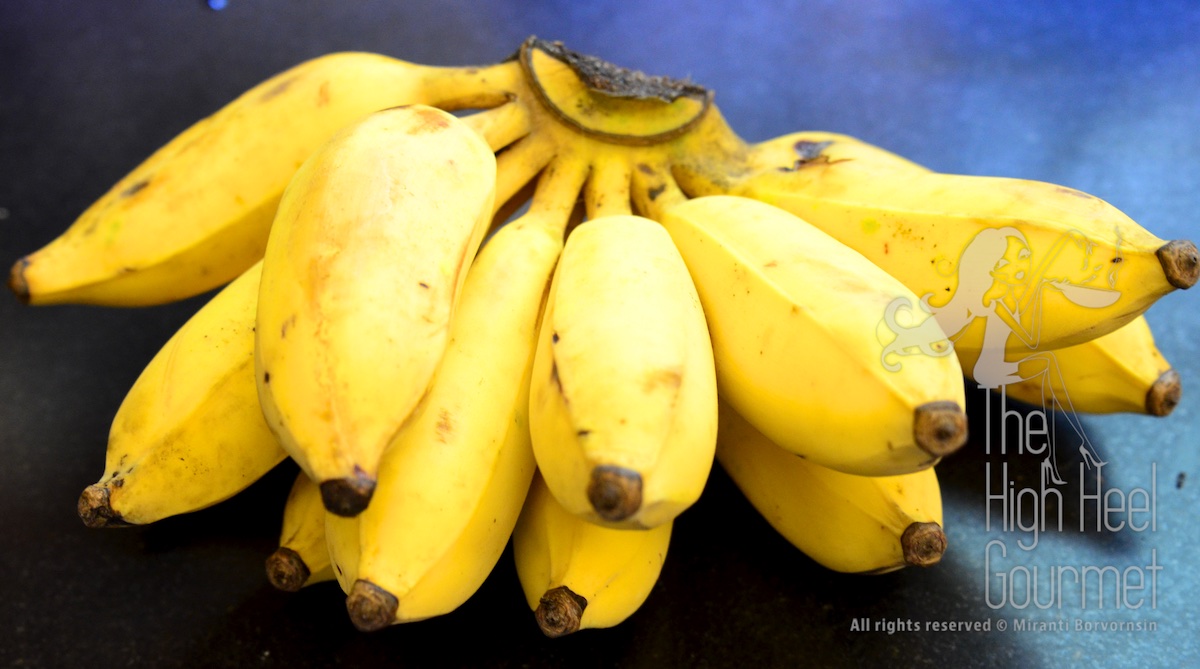
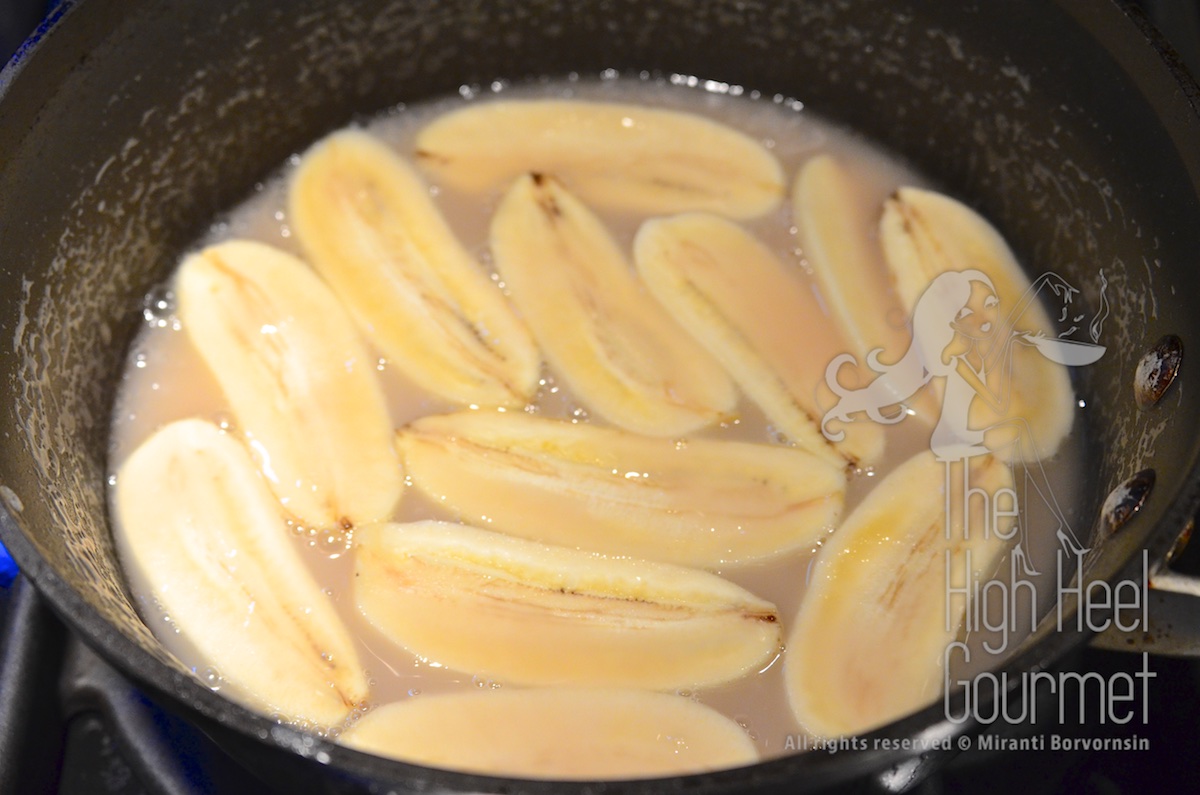
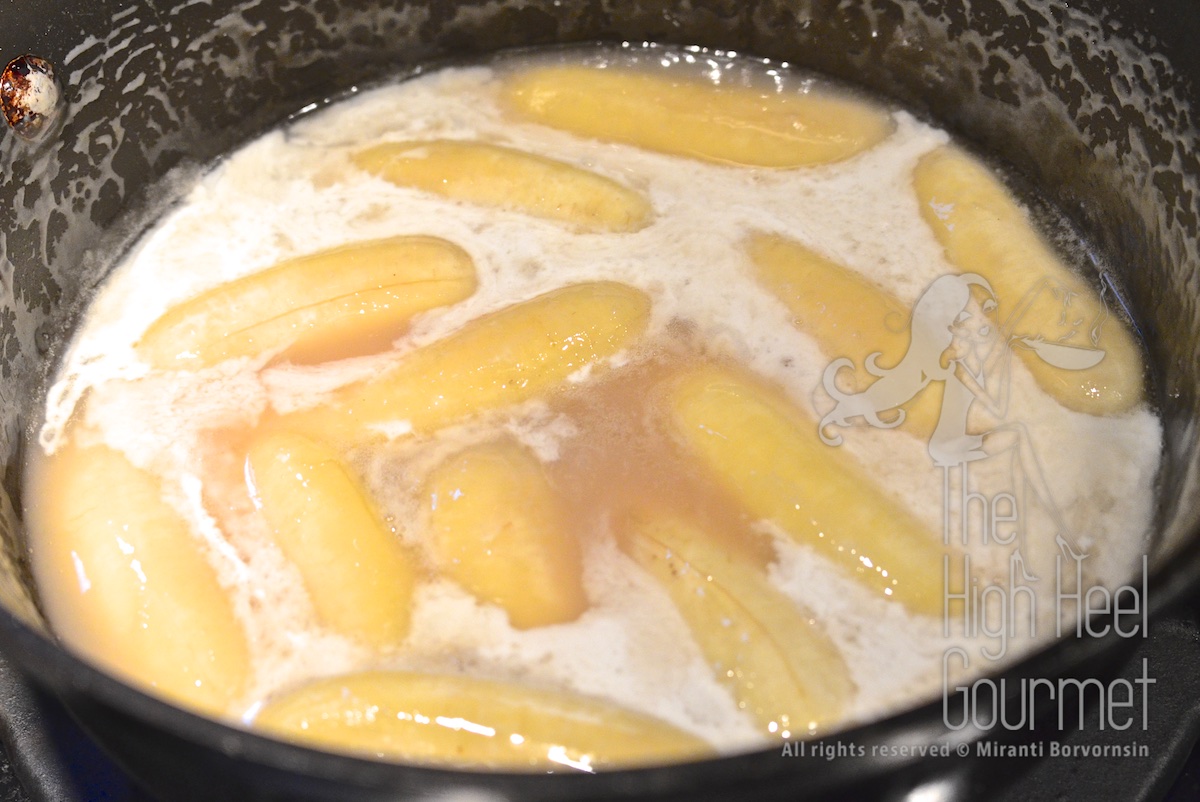
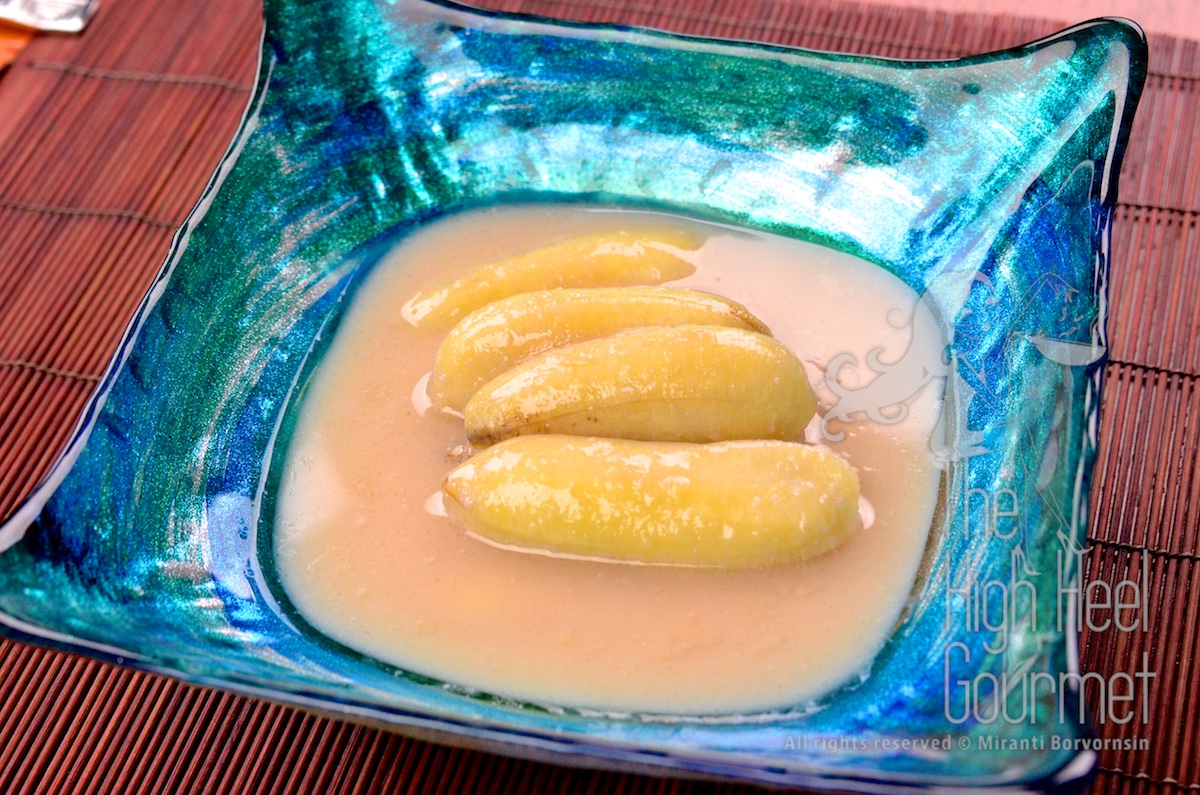
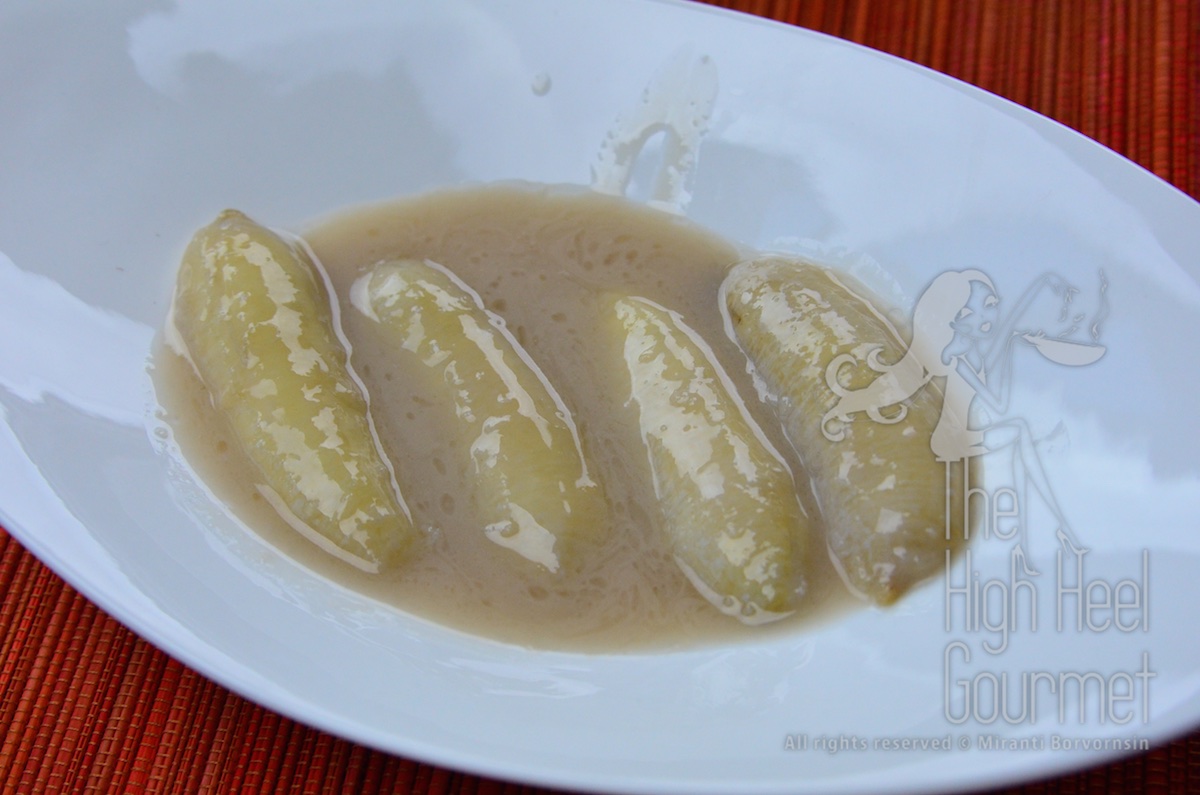
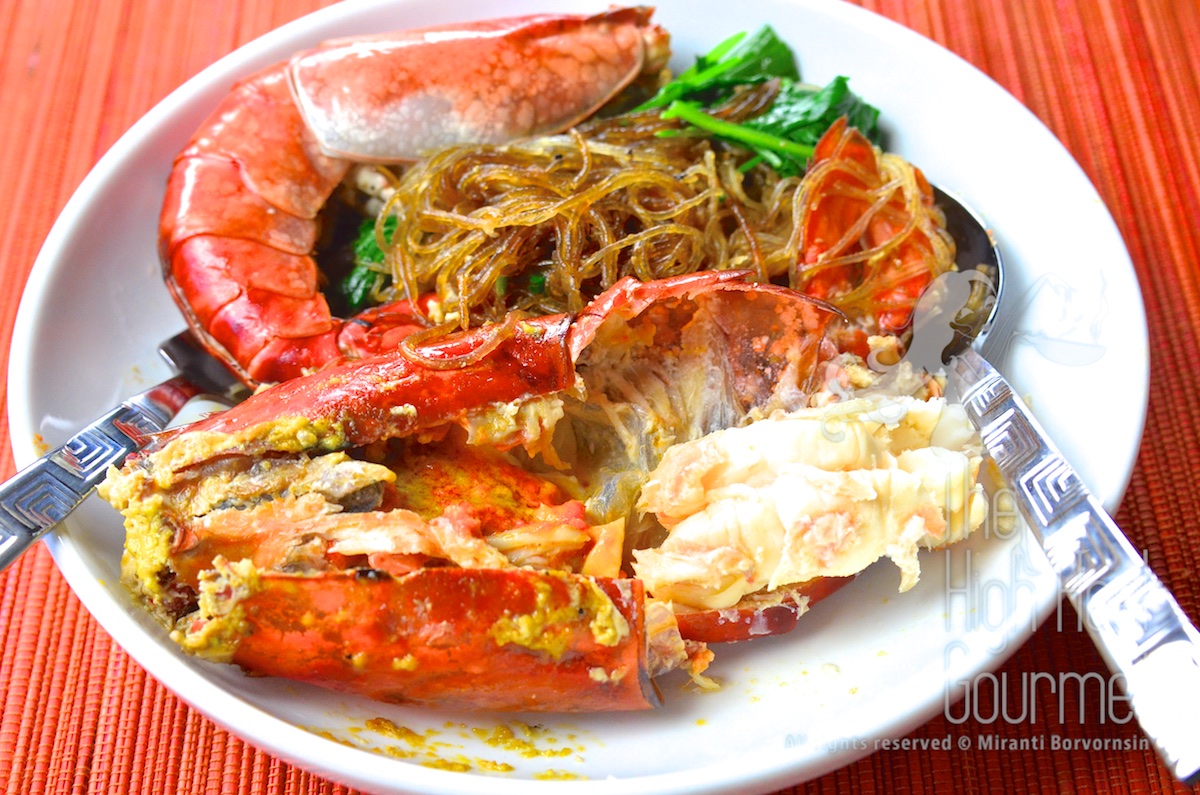
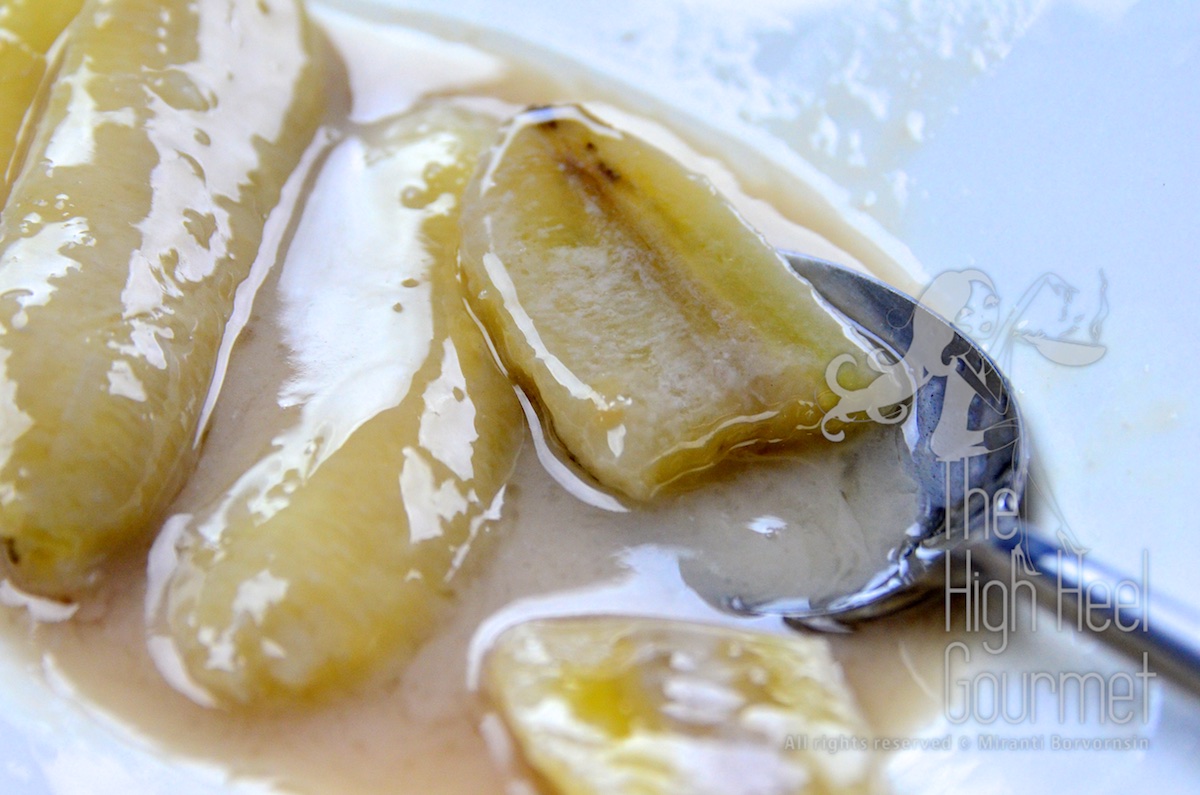
Valentines Day is a non event with us. We celebrate our three anniversaries instead. Wedding, engagement and when we first became a couple. Means more to us and we don’t have to fight the rest of the coupled up world for reservations.
That’s nice. It’s more personal that way, not having celebrate your love with about half of the world.
Reblogged this on The Militant Negro™.
Thanks
Tasty recipe. I, too, dislike Valentine’s Day – and it is NOT a night to choose to go to a restaurant!!
I don’t get it when Valentine’s day became such an event. It’s almost comparable to Halloween in term of how big the event is and definitely bigger than Easter! How’s that even possible?
This looks amazing! We do not fight crows on Valentines day anymore, so we will totally make this special meal! Thanks for sharing! I absolutely love Thai food!
I hope you enjoy it. Happy Valentine’s day.
Reblogged this on ethinktankformomsblog and commented:
This is an amazing menu!! OMG!! Perfect for Valentines day!
Thanks 🙂
Two beautiful posts in one. Excellent stuff Miranti. Every day should be Valentine’s Day.
Mmmmm just so delicious I’m hungry now for this recipe :))
What a fantastic dinner – and not just for Valentine’s Day either! I really hope that you had a lovely evening.
Thanks Georgina. I went to Portland and lucky enough to get in to the popup restaurant called Nodoguro by chef Ryan Roadhouse. You can see the pictures of the dinner on my Instagram or Facebook page. It was memorable 🙂 How was yours?
Looks wonderful! Never go out to eat on Valentine’s Day, Mothers Day — crowded, over priced, less choices (usually the stuff it’s easiest for them to make and push through). One year Dad gave Mother a floral arrangement every week of the year except for Valentines Day or Mother’s Day, because they’re needlessly overpriced then. Anyhow, your dinner looks delightful!!!
Your dad had done something so adorable. Yes, I hate restaurant that do that on the special day which is more than half!